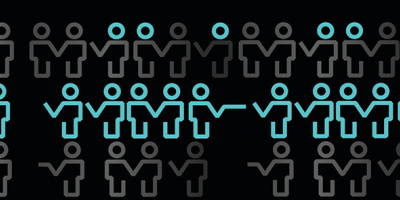As demand and usage surge, companies will face pressure to provide increased videoconferencing services without impacting corporate networks.
Avistar Communications Corp. (www.avistar.com), a provider of unified visual communications solutions, has announced its annual list of expected industry trends for 2011 and beyond. The push for videoconferencing as an essential unified communications (UC) tool for business will continue, especially in virtual environments, and companies will embrace those solutions that enable them to tackle the bandwidth management, interoperability and quality issues that can plague solutions that are not business-class.
Here are areas to watch:
Videoconferencing will be virtually everywhere - Virtual Desktop Infrastructure (VDI) will continue to gain momentum as businesses work to control costs while delivering software tools that employees need to do their jobs effectively. Desktop videoconferencing, for example, has emerged as a must-have solution for business people at offices or on the go, as it provides ubiquitous visual communications–anywhere, anytime, anyplace. All-software solutions will be preferred because of their cost-efficiency and high quality.
What’s old is new again—Interoperability will be a big issue as proprietary communications solutions limit connections to other systems. The industry will again need to tackle the interoperability issue. Will customers accept being forced to bridge standards, media processing and signaling at their own cost?
Videoconferencing on the go will increase—Videoconferencing has moved from the conference room to the desktop, and from the desktop to the laptop. With more tablet devices set to hit the market and the further roll-out of 4G networks, along with the popularity of video-enabled smartphones, true mobile videoconferencing for business is on the horizon, as employees who use mobile videoconferencing in their personal lives will push for the same capability at work.
Thin will still be in—As Avistar predicted last year, thin terminals and desktops continue to be in. We’ll see more thin devices next year and expanded functionality on those devices. This convergence will be seen with videoconferencing popping up as a function in non-traditional devices, such as smart whiteboards and a variety of new and innovative devices, so that people can communicate and collaborate regardless of device, location and/or network capacity.
It's all about the network—As demand and usage surge, companies will face pressure to provide increased videoconferencing services without expanding the cost and complexity of their corporate networks, while also ensuring that critical business applications are not adversely affected by communications solutions such as desktop videoconferencing. Companies will select communications solutions that provide robust bandwidth management, call admission control, user policy support, threshold and utilization modeling, in addition to extensive report and forecasting capabilities.
“Users in 2011 will want a feature-rich desktop visual communications experience that supports industry standards and leverages and extends UC features found in their existing solutions—in the office, on the road and on the go,” said Stephen Epstein, CMO, Avistar. "Avistar delivers on all fronts, with ‘all-software’ solutions that unify the desktop visual communications experience, both on traditional and/or virtual infrastructures. We look forward to expanding our customer base in 2011 with more of these innovative solutions.”




















 More than ever, there is a demand for IT to deliver innovation. Your IBM i has been an essential part of your business operations for years. However, your organization may struggle to maintain the current system and implement new projects. The thousands of customers we've worked with and surveyed state that expectations regarding the digital footprint and vision of the company are not aligned with the current IT environment.
More than ever, there is a demand for IT to deliver innovation. Your IBM i has been an essential part of your business operations for years. However, your organization may struggle to maintain the current system and implement new projects. The thousands of customers we've worked with and surveyed state that expectations regarding the digital footprint and vision of the company are not aligned with the current IT environment. TRY the one package that solves all your document design and printing challenges on all your platforms. Produce bar code labels, electronic forms, ad hoc reports, and RFID tags – without programming! MarkMagic is the only document design and print solution that combines report writing, WYSIWYG label and forms design, and conditional printing in one integrated product. Make sure your data survives when catastrophe hits. Request your trial now! Request Now.
TRY the one package that solves all your document design and printing challenges on all your platforms. Produce bar code labels, electronic forms, ad hoc reports, and RFID tags – without programming! MarkMagic is the only document design and print solution that combines report writing, WYSIWYG label and forms design, and conditional printing in one integrated product. Make sure your data survives when catastrophe hits. Request your trial now! Request Now. Forms of ransomware has been around for over 30 years, and with more and more organizations suffering attacks each year, it continues to endure. What has made ransomware such a durable threat and what is the best way to combat it? In order to prevent ransomware, organizations must first understand how it works.
Forms of ransomware has been around for over 30 years, and with more and more organizations suffering attacks each year, it continues to endure. What has made ransomware such a durable threat and what is the best way to combat it? In order to prevent ransomware, organizations must first understand how it works. Disaster protection is vital to every business. Yet, it often consists of patched together procedures that are prone to error. From automatic backups to data encryption to media management, Robot automates the routine (yet often complex) tasks of iSeries backup and recovery, saving you time and money and making the process safer and more reliable. Automate your backups with the Robot Backup and Recovery Solution. Key features include:
Disaster protection is vital to every business. Yet, it often consists of patched together procedures that are prone to error. From automatic backups to data encryption to media management, Robot automates the routine (yet often complex) tasks of iSeries backup and recovery, saving you time and money and making the process safer and more reliable. Automate your backups with the Robot Backup and Recovery Solution. Key features include: Business users want new applications now. Market and regulatory pressures require faster application updates and delivery into production. Your IBM i developers may be approaching retirement, and you see no sure way to fill their positions with experienced developers. In addition, you may be caught between maintaining your existing applications and the uncertainty of moving to something new.
Business users want new applications now. Market and regulatory pressures require faster application updates and delivery into production. Your IBM i developers may be approaching retirement, and you see no sure way to fill their positions with experienced developers. In addition, you may be caught between maintaining your existing applications and the uncertainty of moving to something new. IT managers hoping to find new IBM i talent are discovering that the pool of experienced RPG programmers and operators or administrators with intimate knowledge of the operating system and the applications that run on it is small. This begs the question: How will you manage the platform that supports such a big part of your business? This guide offers strategies and software suggestions to help you plan IT staffing and resources and smooth the transition after your AS/400 talent retires. Read on to learn:
IT managers hoping to find new IBM i talent are discovering that the pool of experienced RPG programmers and operators or administrators with intimate knowledge of the operating system and the applications that run on it is small. This begs the question: How will you manage the platform that supports such a big part of your business? This guide offers strategies and software suggestions to help you plan IT staffing and resources and smooth the transition after your AS/400 talent retires. Read on to learn:
LATEST COMMENTS
MC Press Online